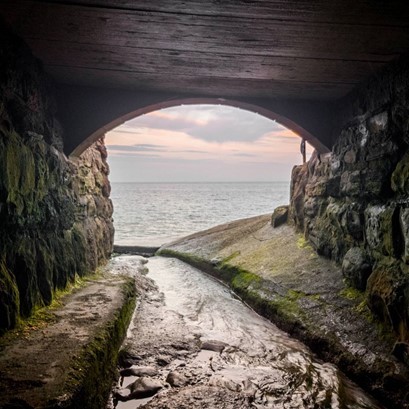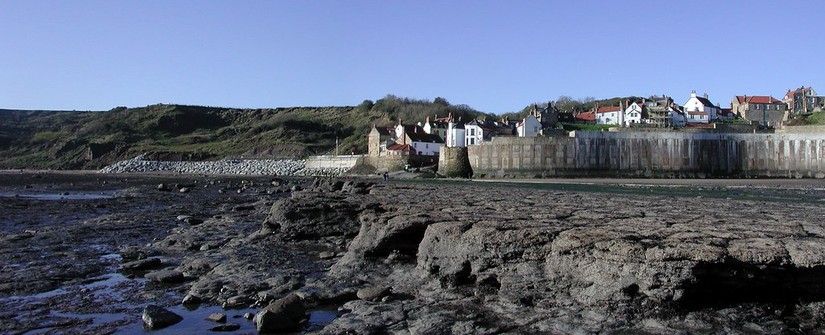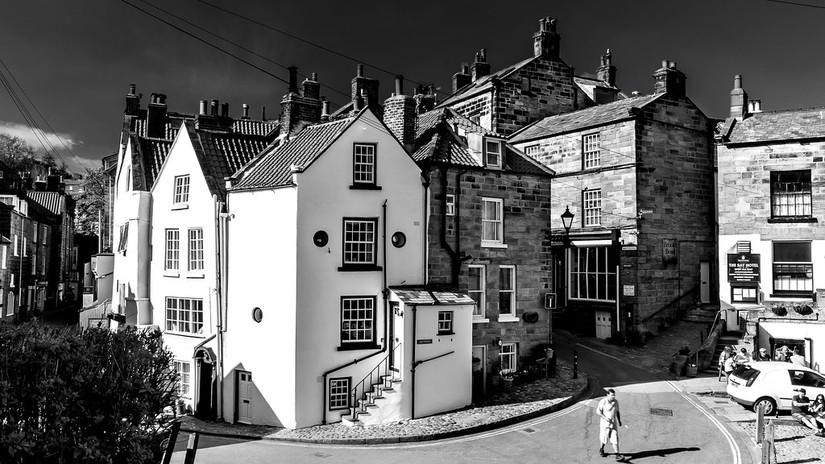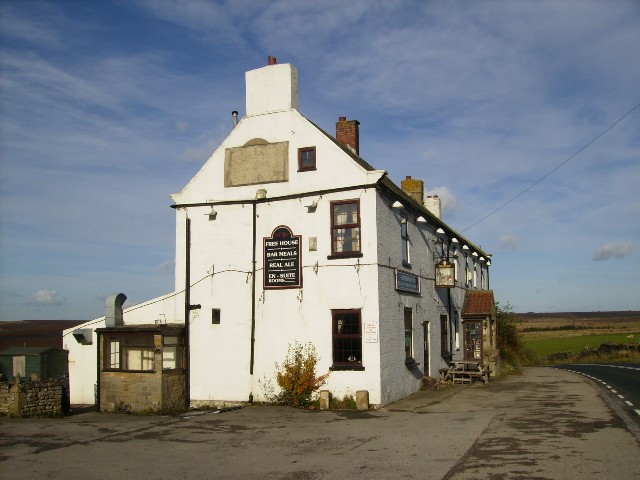Robin Hoods Bay; smuggling, ghosts and Listed fish.
13/11/2021 | Hannah Thompson
Just a quick introduction, my name is Hannah and I have recently joined CITiZAN in the role of Community Archaeologist for the North Team, supporting Andy and Chris with the Liverpool Bay and Humber Discovery programmes.
With us all staying indoors more than usual last year I, like many people, found myself rapidly running out of things to watch on Netflix, and decided to rewatch BBC’s drama Poldark. Sitting nervously cradling a cup of tea watching the exploits of Ross Poldark, as he narrowly escapes an ambush by excisemen on a Cornish beach, you could be forgiven for thinking that the life of a smuggler in the 18th century was an exciting one. But it got me thinking about smuggling on the Yorkshire Coast.
Smuggling contraband in the 18th century was a huge risk; what happened to goods once they were ashore? Were smugglers always successful and ultimately, is there still evidence of their exploits in the landscape today? One such place where the answer to this is most definitely ‘yes’ is one of my favourite spots on the coast, a place of intrigue and folklore, Robin Hood’s Bay.
Set within the beautiful scenery of the North York Moors National Park, Robin Hood’s Bay is nestled on the North Yorkshire coast between the larger tourist destinations of Whitby and Scarborough. Looking at this quiet fishing village, it may be hard at first glance to believe that this tiny spot, now a haven for tourists and walkers of the Cleveland Way, was once one of the most important locations for smuggling in the 18th century.

Smuggling, or so-called ‘free trade’ of luxury goods was a huge problem in 18th century society. In essence, smuggling was a way of obtaining luxury goods without paying heavy import taxes which were imposed by the government after needing to reclaim vast amounts of money spent on wars with Europe. In a similar way to the black market of Second World War Britain, the illegal trading networks set up by smugglers were a way of getting your hands on goods which were otherwise unavailable to the everyday villager.
Those taking part in such illicit activities were classed as outlaws, however, as Patricia Labistour notes in her book ‘A Rum Do!’, in reality, smugglers were often looked upon by local communities much more favourably, providing a source of cheaper luxurious goods such as silk, spirits, tobacco and tea, without troubling the excisemen and their apparently unjust taxation measures.
Originally referred to as Bay Town, Robin Hood’s Bay was said to be at the heart of one of the most powerful smuggling networks on the North East Coast. It was said that a bale of silk could be unloaded from boats and transported from the bottom of the bay to the top of the hill out onto the moors without ever seeing daylight. Looking at the narrow winding streets and mish-mash of tightly-packed houses, it is easy to see why!

It is well known that there were a network of subterranean tunnels which ran between the houses of Bay and which were used to transport goods, with many houses in the village also storing the contraband when needed in specially created ‘smuggler’s holes’ dug out under the floors of the houses. Over time many of the cottages have revealed evidence of potential links to their smuggling past, with potential blocked-up entrances often coming to light in modern surveys.
One such tunnel which was potentially used in smuggling runs in Bay remains accessible; if you are brave enough, put on your wellies and take a torch into King’s Beck tunnel beneath the Bay Hotel. Look out for the side tunnel which leads off the main drain, and you will find wooden timbers visible above your head; these are believed to be the floorboards of the properties above, which may have been used to pass smuggled goods between the houses.

However it was not as simple as you may have thought to catch smugglers, particularly when they had the support and discretion of local villagers; ladies smuggled silk around their waist and it is said, even carried animal bladders full of alcohol under their skirts in order to pass goods along trading networks across the moors. Salting fish was often used to cover up the trade of smuggled goods; who would know that the baskets of fish being carried to the inn to be salted were not the only commodity being traded that day?
Yet it was not just the lower rungs of society who were involved with the illegal activities; often the gentry became involved in smuggling runs. The Farsyde family of nearby Thorpe Hall are believed to have been deeply involved in smuggling activities in Bay, with a smuggler’s cargo hold still visible in the grounds of the property.
Bay was a very close knit community, something which is reflected in the bones of the village itself; in fact, several of the streets are believed to be named after locals. Narrow stepped passageway ‘Jim Bell’s stile’ is believed to be named after a local mariner, buried in old St Stephen’s church, a stunning seamen’s church overlooking the bay in neighbouring Fylingthorpe, which still retains its traditional wooden box pews.

However, it is worth noting that Robin Hood’s Bay hasn’t escaped coastal change, having fallen victim to a tragedy in the 18th century when a section of the village collapsed into the sea, eventually leading to the creation of the huge harbour wall sea defence in 1975 which is still helping to protect Robin Hoods Bay today, albeit now in need of some repair work. The North York Moors National Park estimate that up to 22m of the coast has been lost since 1895.
The below photograph shows the foreshore area prior to the erection of the large sea defence wall in 1975, which is visible to the right of the modern rock armour.


Given the historic significance of the village, it is no surprise therefore that many of the buildings in Robin Hood's Bay are Listed. Many of the cottages in the village also retain physical reminders of their smuggling past; whether this be cottage or street names or that in a previous life they formed part of the network of inns in the village which was vital to the smugglers’ success. One residential property in the village, previously the Fisherman’s Arms dates back to 1680 and is believed locally to be the site where, on an Autumn night in 1779, revenue officers fell asleep in the cellar after sampling the proceeds of a raided smugglers haul of gin and brandy which they were supposedly guarding. It is said that locals, on learning of this, alerted the local smuggling gang who came and stole the contraband back ...... a rather embarrassing end for the officers who awoke to find their cargo gone!

As you can imagine therefore, this section of coast is the subject of folklore and ghost stories, many of them relating to smuggling; often these are believed to have their origins in the smugglers themselves, who played on villagers’ superstitions in order to avert prying eyes. One such ghost story is famous in the area; the tale of Saltersgate Inn.
Sadly now demolished, the Saltersgate Inn, previously known as the Waggon and Horses stood in an elevated position on the moors, on what is now the main road between Pickering and Whitby, with its name thought to originate from the salting of fish which is believed to have taken place here. The name of the inn could potentially have been derived from the Yorkshire word ‘Yate’ meaning road, therefore ‘Salters Road’. It is said that one night, a customs official, on finding out that illicit trading activities were taking place at the inn, was murdered by smugglers and his body buried beneath the fireplace. It was said that if the fire was ever to stop burning, then the ghost of the murdered officer would return to haunt the inn. It is unclear where the famed historic fireplace is now located, but they must have gone through a lot of firewood to keep it burning for all those years!

By the early 19th Century, the Coastguard service had been established, taking over the building now aptly known as ‘The Old Coastguard Station’, which was in prime location for catching smugglers on the slipway to the dock, and which had also previously been a public house. Now owned by the National Trust and functioning as holiday cottage and visitor centre, the characterful building interestingly also features a Grade ii Listed donations box for the Lifeboats Association, in the form of a charming metal fish. Named simply on the Listing information as ‘The fish’, this unique feature acted as a collecting box for the Royal National Lifeboat Institution, and is thought to be the oldest collection box for the RNLI which is still in use, dating from 1887.

Robin Hoods Bay is also home to an excellent local museum, based in the old Coroner’s Room and Mortuary, a fascinating building with its use as a Coroner’s room dating back to the late 19th Century, later used as a reading room for local residents. The museum includes an excellent display on smuggling in Bay, and is well worth a visit.
Although smuggling has long since died out in Robin Hoods Bay, the remnants still left behind in the fabric of buildings and the stories passed down by locals continue to keep the memories of this bygone era alive.
I leave you with a section of Rudyard Kipling’s poem ‘A smugglers song’, which paints quite the picture of smuggling in the 18th Century;
Five and twenty ponies,
Trotting through the dark -
Brandy for the Parson, 'Baccy for the Clerk.
Them that asks no questions isn't told a lie -
Watch the wall my darling while the Gentlemen go by!








